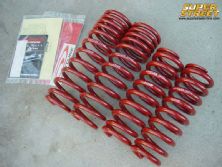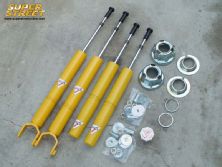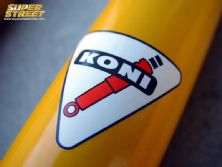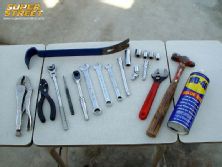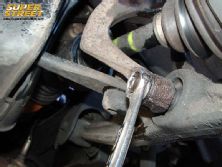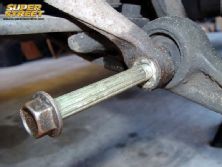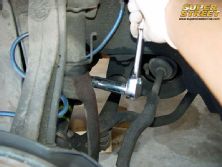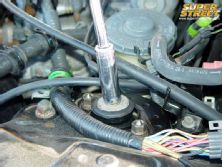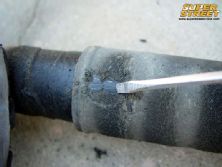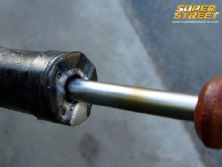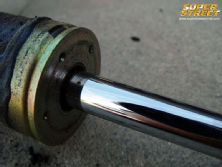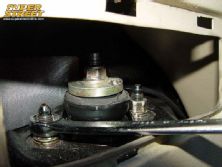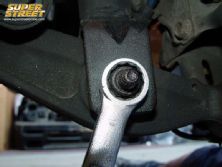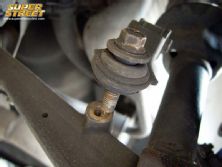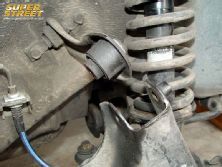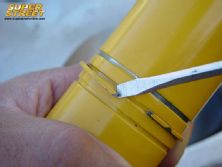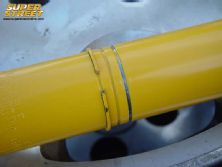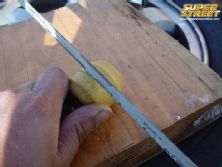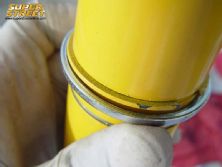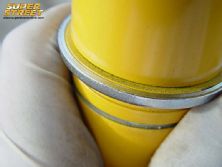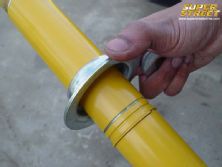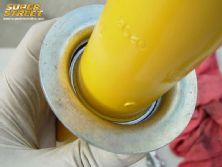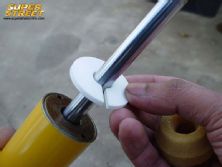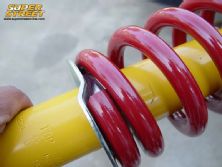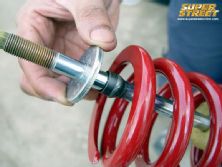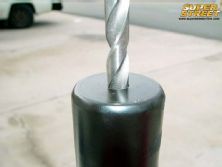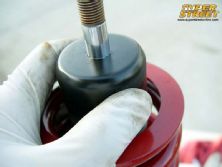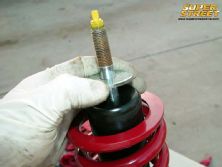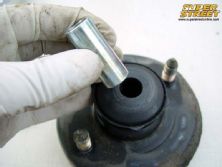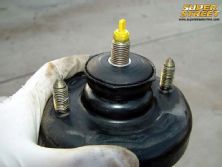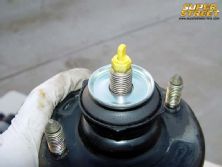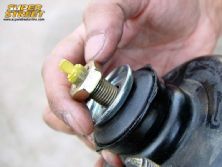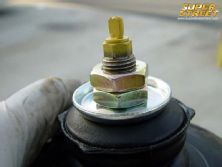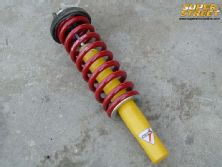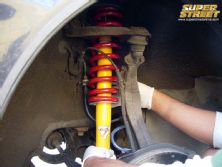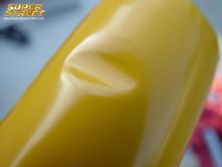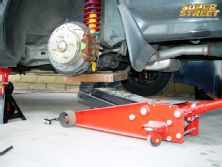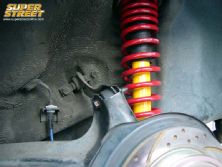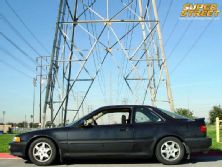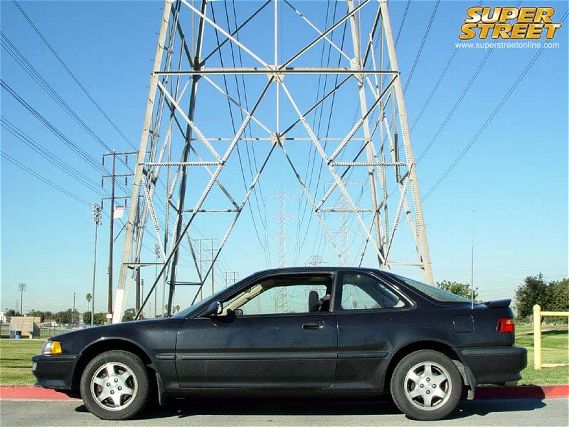 | Nosebleeding-ly high
| Nosebleeding-ly high
I couldn't find it in Webster's, so Chimpy's is gonna have to do. Selective Amnesia: when you know something is true, but you trick yourself into thinking otherwise. If someone tells you they've never experienced this perpetual condition, they're telling porky pies. Heck, I'll be the first to admit it. I tricked myself into thinking I could finish Project Flashback in a couple of months. Riiight. I must have forgotten that I had a job and three wives to feed. Ok, ok, two.
The first question I'm going to get from SuperStreetOnline readers is, "Why don't you use coilovers?" Let me explain. First of all, you already have coilovers. Coilovers are simply coil springs over shocks or struts. Threaded coilovers are what you mean. But for the sake of space and laziness, I'll just refer to them as coilovers. I first read about threaded coilovers for consumer consumption ten years ago in the August 1995 issue of Sport Compact Car. The story was written by Alexander Sipe (on page 94 if you care to look it up) and focused on Bec-Tech Suspension's threaded struts for Hondas. The Bec-Tech units allowed the user to adjust the height independent of the other (struts), allowing for custom ride heights. I thought it was pretty cool.
Fast forward to 2005, and every manufacturer and their momma has a coilover contribution. But for whom? I'll C-walk out onto a limb and shout my fervent stance regarding the use of coilovers for cars reserved strictly for street usage. Reminiscent of The Tonight Show with Jay Leno, if I walked the aisles of any import show and asked 20 "car customizers" what the primary benefit of having a coilover is, I'd regress to say that 19 would have the wrong answer.
Coilovers are used to corner-weight a vehicle as well as to set the ride height. Corner weighting helps tremendously, and all serious road race cars have coilovers for this reason. But our DA is not a racecar. It's a street car. A street car that will see the track once every two months. That fact hardly qualifies it as an SCCA ringer.
So when it came time to choosing a suspension setup for our DA, we wanted to stick to a strut/spring combo only. We've had excellent results from past projects featuring Eibach components. Eibach offers a couple different sets of springs for the DA chassis: Pro Kit and Sportline. Pro Kit springs offer a 1.4"/1.0" drop (F/R), but rates that were comparable to that of a sport luxury sedan. We wanted a couple notches above C-Class carving capability, so we opted for the Sportlines, which offer a 20% higher spring rate than stock and slightly lower 1.8" drop in the front and 1.4" in the rear (the Pro-Kits we checked out a few years back had suprisingly similar ride quality albeit a higher stance).
With the springs chosen, our next obstacle was to figure out what dampers to use. I personally have used pretty much everything on the market in terms of aftermarket suspension for Hondas, and one brand stuck out in my mind--KONI. KONI makes dampers. They make arguably the best dampers. All it took was one ride in a KONI-equipped DC2 (94-2001 Integra) to feel how well dampened the car was. The setup consisted of KONI "yellow" struts and Ground Control threaded sleeves with Eibach ERS springs. The rates for the ERS units were 400fr/500rr pounds per inch. Most of the time, cars that have rates as high as these overwhelm the dampers. This causes bounce. Bounce is not good, especially if your diving into a turn at 70mph and you hit a bump. The DC2 did not bounce, but rather absorbed the road undulations, raising my confidence level to drive the car harder.
For project flashback, the KONI struts we used were off-the-shelf units (p/n 8041-1200 Sport and p/n 8041-1201 Sport) though custom shortened can be made to order for the more dedicated road racer. The struts are fully adjustable (rebound) with a simple twist of the strut's shaft.
Enough--click on Page 2 for the step-by-step installation...
Next mods? We knew you'd be wondering. Wheels and tires. We're trying to decide between 15's and 16's. We're also deciding on throwing the whole old-school wheel deal out the window since we can't find the ones our SuperStreetOnline readers voted on (Enkei J-Speed III's). Our friend Tobin down at Enkei has some ideas...

